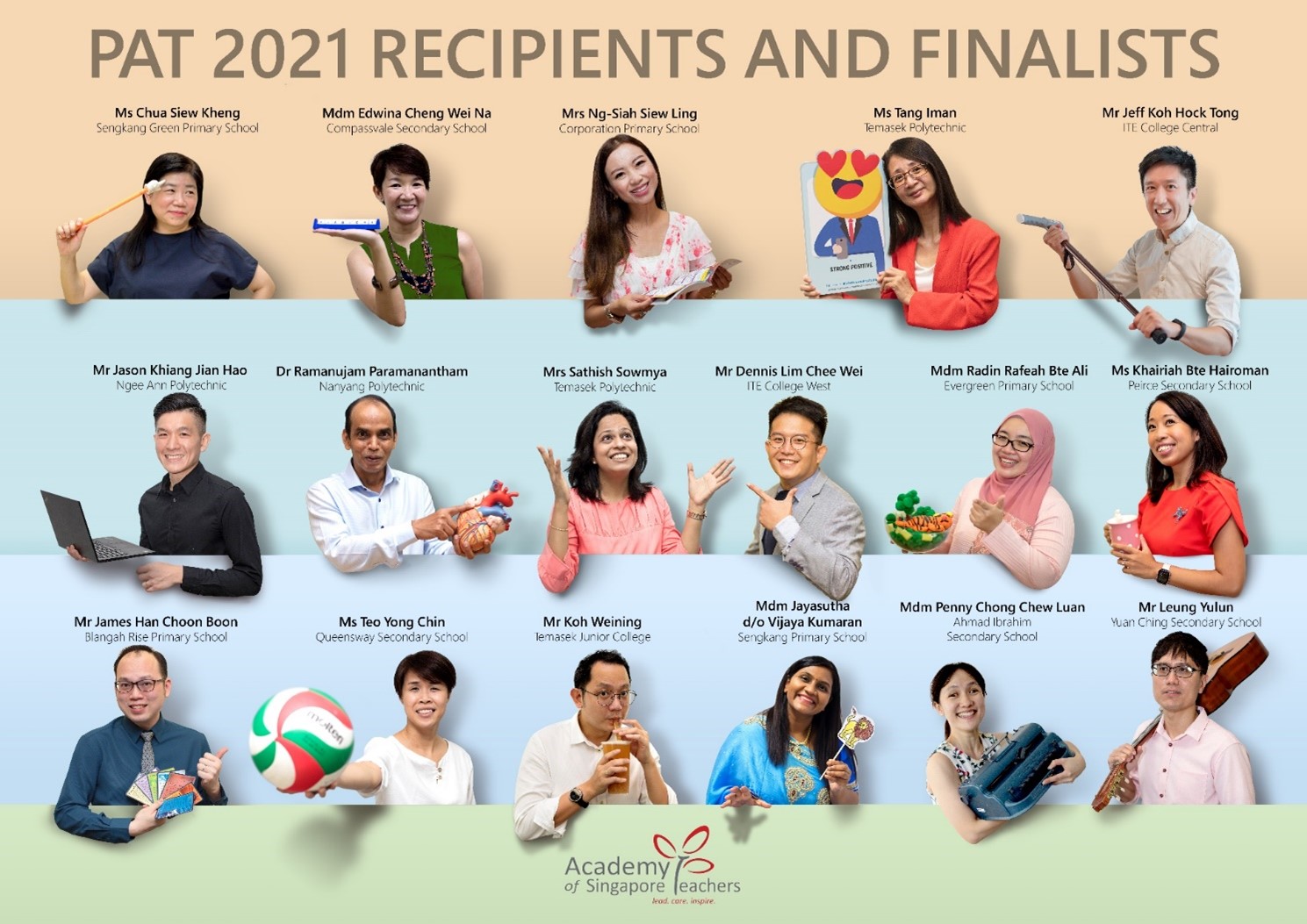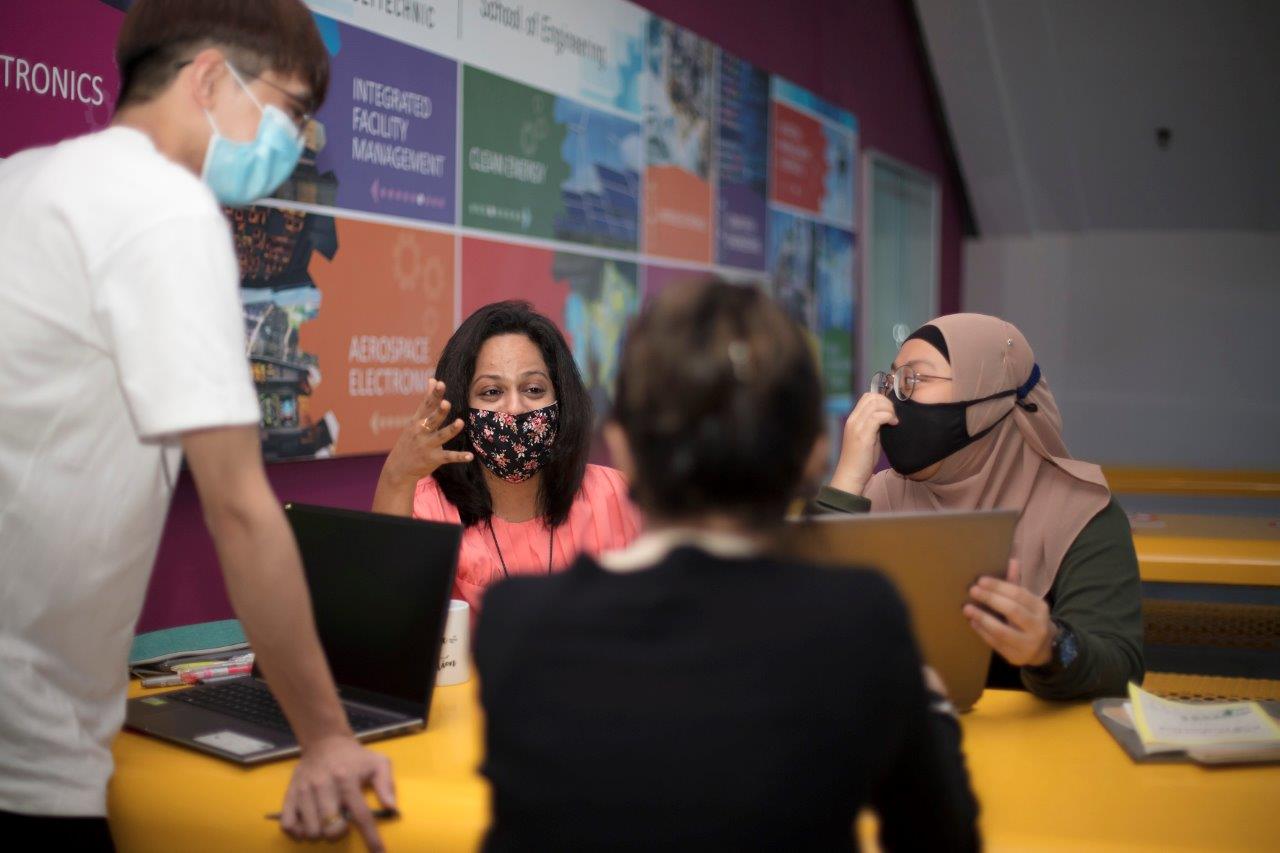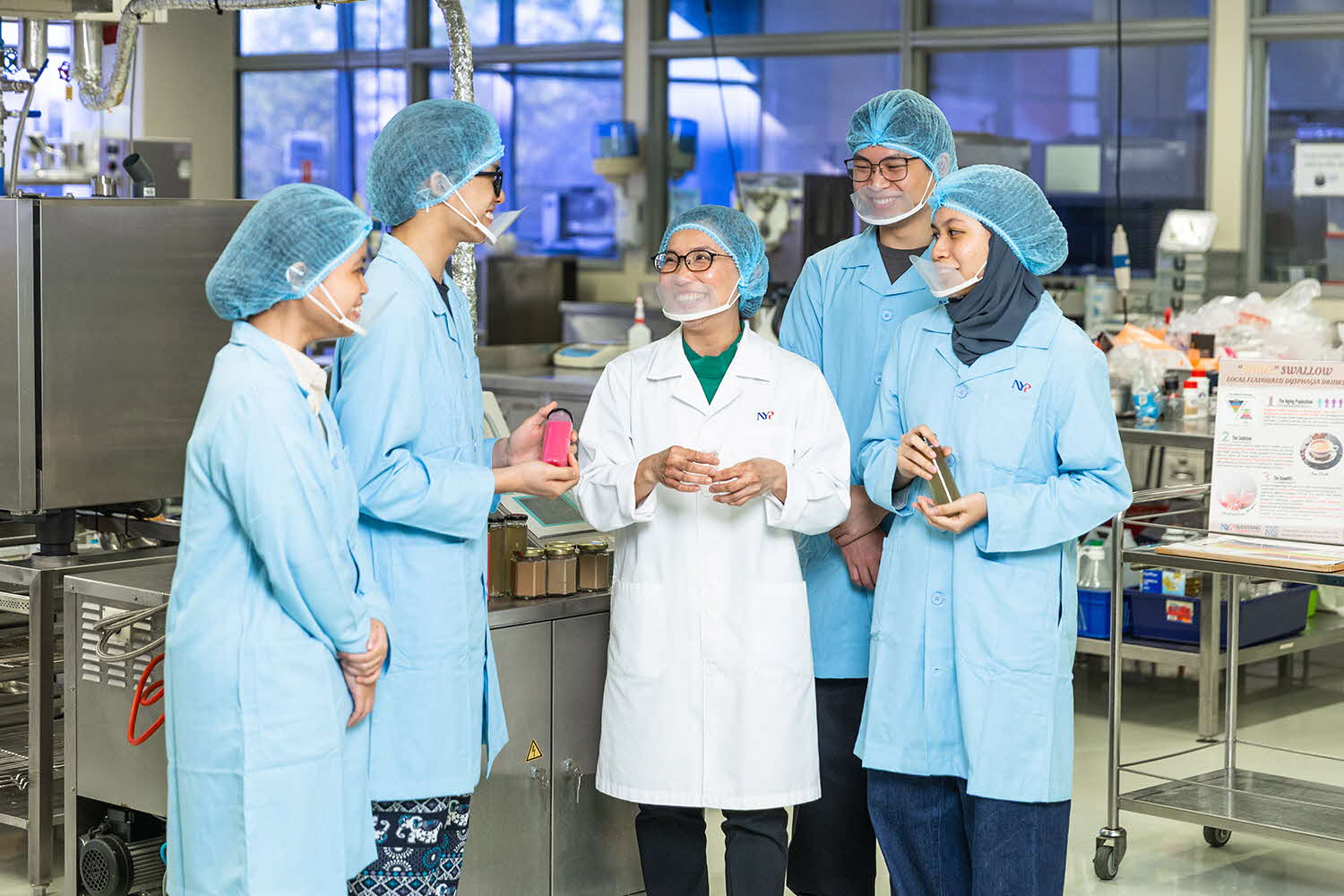Sowmya Sathish, Temasek Polytechnic, President’s Award for Teachers 2021 Finalist
When a primary school approached green building professional Sowmya to take a look at what was causing the heat and discomfort in their auditorium, and propose solutions, she decided to rope in her Year 2 Temasek Polytechnic students.
A hundred of them.
The school was game, so, as Sowmya said, “We arranged a field visit for the students to observe the issue and engage with the users before proposing solutions.”
For Sowmya, who believes that sustainable building design is about a thoughtful response to the context of the building, such opportunities for students to problem-solve in the real-world are vital.
She said, “I use such case-based learning as a tool to help students see the direct implication of their skills in everyday life.”
“Students, and even many of us, change our career roles through life. If students realise their potential to positively impact their immediate surroundings and people around them, I believe they will continue to be involved in meaningful projects irrespective of their career choice.”
Holistic solutions
Sowmya is speaking from personal experience. As a green building consultant in the private sector, she struggled to put sustainability at the heart of good design and not as an add-on or after-thought. In wanting to bring about this change, she became a teacher, so that she could nurture, she says, “a generation of professionals for whom sustainability or circular economy is no longer a target but the basis of design”.
She added, “If you notice vernacular buildings such as the kampung houses at Pulau Ubin, our ancestors had conceptualised them holistically and without depending on technology. This is quite challenging for us today.”
Back at the primary school, her students set about their task to tackle the heat build-up issue. After simulating the environmental conditions through technology and analysing the results, students suggested, among other ideas, a solar chimney to replace the skylight to release heat. They also suggested strategies such as a green roof with reflective panels, and permeable paving and greenery to generate a cooler atmosphere around the premises. The proposals were data driven, sustainable and simple rather than a quick fix, like air-conditioning.
Sowmya is so invested in such case-based learning that she has even ‘staged’ such events in the absence of real ones. Her students think they are meeting real clients, but they are lecturers and managers from other departments, who have been roped in to play the part of clients. In one such event, her students were called on to propose designs for an indoor/outdoor gallery at the Glocal Connect Village building on campus. The ‘clients’ described their vision and the students pitched their ideas.
Said Sowmya with a laugh, “These ‘real’ conversations help increase the engagement of students in the project and address issues from a practical perspective. But such enactments take a lot of effort, and we cannot repeat the same ‘drama’ for at least a few years as it would reveal our ‘reality show’ to the students.”
Get them thinking
It’s all part of the immersive learning experience, where students see the sustainability possibilities in their everyday life outside the classroom. And Sowmya is happy to challenge her students to look beyond the obvious answers.
So, when her students couldn’t move beyond ideas such as recycling and rainwater harvesting for a project inspired by TP’s zero-waste drive, she organised a workshop on upcycling in collaboration with the Building and Construction Authority’s ibuildSG programme. As part of this, students designed lamps using milk cartons.
A virtual tour of the Sustainable Singapore Gallery got students thinking about how in Bishan Park, rainwater is naturally filtered, purified and used to beautify the environment.
This led to a flurry of ideas from students: they suggested aquaponics, where waste matter from fish provides the necessary nutrients for plants that purify the water; cans turned into walls; tree trunks into park benches; and crates into furniture…
“It was important to steer students towards self-directed learning without providing direct answers,” said Sowmya.
Building confidence
If you would like to spot Sowmya on campus, you are most likely to find her holding consultations with students along informal spaces, like the benches in the corridor or the group study spaces at the library.
“I see myself as a friend-mentor rather than their lecturer,” said Sowmya.
“I believe that students can only work towards fulfilling their potential when their basic needs, like being esteemed for who they are and being safe, are met.”
To create this safe space, Sowmya even makes ‘conscious’ mistakes to show that it is normal to do so. “We troubleshoot issues together. Once they realise we are on the same page and an experienced professional can also encounter similar problems, students tend to feel comfortable to make mistakes and try to overcome them using similar strategies.”
Sowmya thinks nothing of staying on her feet for six hours in a day, walking around the class, sharing personal experiences and having small group conversations. “I have never sat down during lessons,” she said.
To build her students’ confidence, Sowmya practises ‘feed-forward’ instead of ‘feedback’. As she explained, feedback is given after an assignment, and often the learnings are not transferred to the next assessment due to the time-lag in application. After seeing this learning gap, Sowmya started feed-forward. This approach may take different forms: Sowmya may comment on probable pressure points of certain topics; students could mark their own submissions for self-evaluation; or there could be a two-stage submission, where the initial feedback is reflected in the final submission. The focus is as much on the process as the product, she says. These constructive comments offer opportunities for improvement that are seen in the grades.
In another effort to build confidence, Sowmya taught her students to put together e-portfolios. She explained, “While preparing students for internship interviews or talking to graduates, they seemed to lack confidence integrating their learning from the various modules for industry application.”
So Sowmya set out to put together a workshop to teach students how to build web-based portfolios that would show off students’ projects as artefacts along a journey and not as separate, unconnected pieces. “I wanted to make the student’s learning visible, creating a sense of confidence and achievement, while also enabling the interviewer to see that accomplishment.”
Open to ideas
In trying to empower her students, Sowmya has found herself in some tricky situations outside her comfort zone.
She recalls a student, who wanted to change his approach to a given project. He wanted to try an advanced approach that relied heavily on computational simulations. “We discussed the risk factors, that he may not be able to hit all learning outcomes in the event of failure, but we were willing to experiment. Today I admire this attempt and showcase his work to my students.”
Another student requested to use Minecraft, a gaming software, to help her get comfortable with 3D modelling and visualisation before using the tools that she had learnt in her previous module. As a lecturer, Sowmya felt uncomfortable with the proposal as students are meant to use the actual software being taught and not gaming apps. However, believing that learning needs vary for every student, she crafted a plan integrating the gaming approach as an additional stage to the learning process rather than a replacement.
“I told her that I would provide feed-forward based on the app only for the initial idea. After all this generation has more experience gaming than software tools, so why not?”






.jpg)
